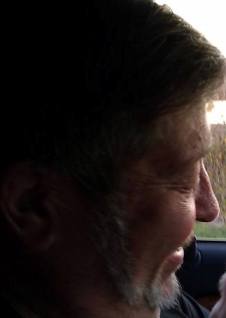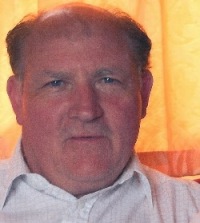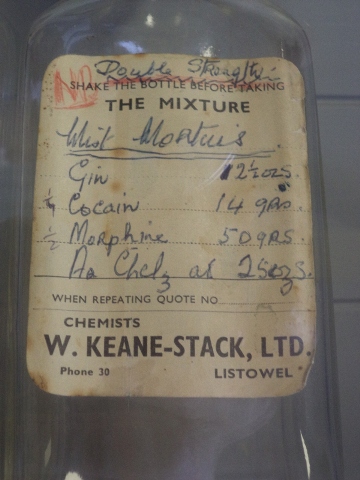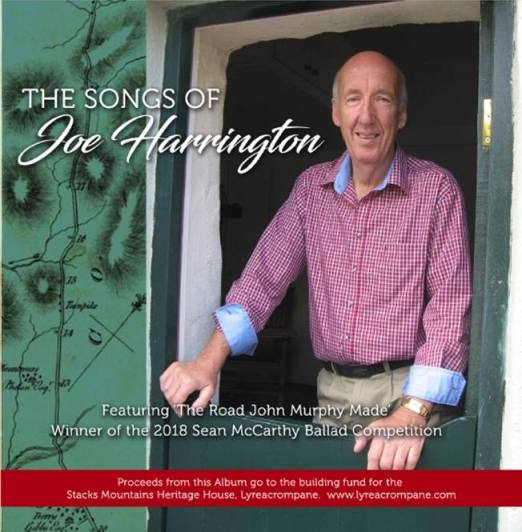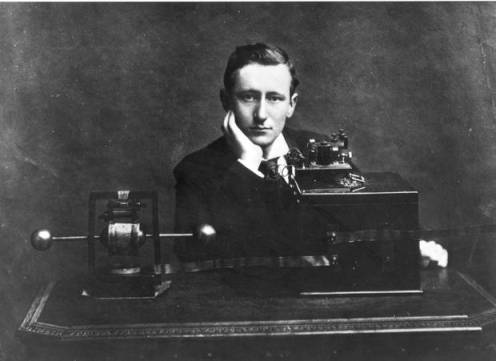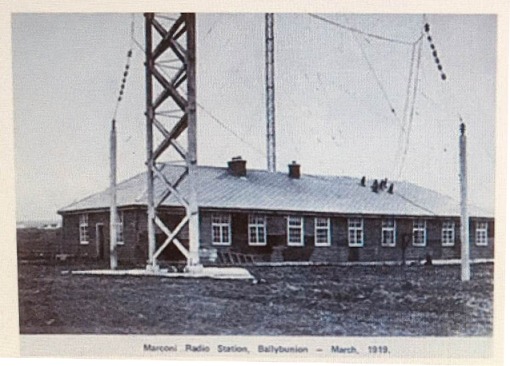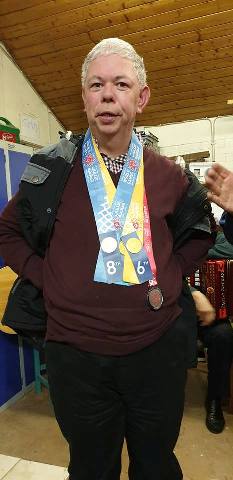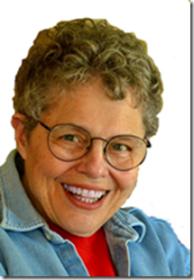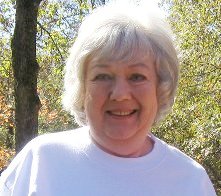
Eden Exit
On a sultry summer day in the early 1990’s, we were
perched high above Penitentiary Bend, an ox-bow curve in Big Sugar
Creek, named for the many sugar maples that once clung to its banks. The
narrow stream then meandered to the southwest in its serpentine track
to join Little Sugar Creek and thus form Elk River at Pineville,
Missouri, my home town. We had retired there the year before. Beginning
several miles to the south, Big Sugar wended its way west toward
Oklahoma. Most Missouri streams flow directly southeast to the
Mississippi. It was one of the many odd things about McDonald County and
that wasn’t counting some of the people.
The origin of bend’s ominous name was lost in time. Perhaps
it was the site of a POW camp during the Civil War, but no one was
sure. I had grown up in a culture of hill folk. My ancestors had lived
in the mid-south mountains since the 1700’s. There was a strong oral
tradition where stories were told for entertainment and to preserve
history and family lore. Unfortunately, in modern times, weekly
“visiting” and the frequent repetition of favorite tales had died out
and the culture was dying as well. To a small extent that day my husband
Al and I were acting out a rite from the past – visiting with a
relative and catching up.
The deck was cantilevered beyond the edge of a limestone
bluff at eagle-eye level. The deck was what made my Cousin Paul’s cabin
perfect. We could see the bass flicking through pristine water far
below. Paul said he could hang a fishing line over the rail and catch
dinner without leaving the house. For eons it had been the only highway
through the region – first to ease movement of Indians who came to hunt
and fish, then explorers and settlers. Over time, it had become simply a
recreational stream - popular because it was slow moving, relatively
shallow and crystal clear with a gravel bottom. It was ideal for
floating, swimming, fishing or idling away a pleasant day. Other than
the many camp ground owners who made a tidy profit from a cash-only
business, the locals merely tolerated visitors. They did refrain from
bumper stickers that read “If there is a tourist season, why can’t we
shoot them?” They probably thought about it, but lack of availability of
stickers or inertia prevented any action. There is a lot of inertia in
the Ozarks. Scarlett O’Hara might have had some relatives who lived
there.
We enjoyed the warm summer afternoon; watching an
occasional flotilla of canoes glide past. In the distance we saw
buzzards slowly circling. They had caught a whiff of dinner. During the
warm months, the bald eagles sub-let the sky to the buzzards that tidied
up after speeding tourists. Apparently they found road kill tasty. A
soft breeze soughed through the steep wooded hills that were lush with
the heavy greenery of summer. Below a grove of sycamores hid their bony
white fingers beneath a verdant canopy.
That was the moment I had an inspiration. “I don’t think I
could ever get closer to Heaven than where I am today.” I said to my
husband. After a few moments of quiet, I said, “Al, I want a place on
Big Sugar.”
My husband was agreeable to almost anything I proposed so
long as I was reasonably well behaved and didn’t do something outrageous
on the courthouse steps and scare the horses. That is another way of
saying that provided I didn’t do something embarrassing that might alarm
others, he was game.
“Good idea,” he said. That week we began looking for a
cabin on Big Sugar Creek. Success was improbable. I wanted to have a
place not too remote and there were very few houses on the ten mile
stretch of dirt road that ran beside the creek between Pineville and the
once thriving hamlet of Cyclone. Remote was a relative term. McDonald
County wasn’t at the ends of the earth, but you could almost see it from
there.
* * * * *
For most of the first eighteen years of my life, I had
planned my escape from Pineville, a backwater village that had raised me
with love and caring. It was the safest place I would ever know;
peaceful, cooperative and to be totally honest, I was related to most of
the people in one way or another. My generation saw no future in
staying. The days of self-sustaining farms were over; there was little
hope of finding a job. We had to leave or be satisfied with a very bleak
future. It was also the dawn of realization that women could have a
career and I wanted one.
The next thirty five years I was torn between two worlds as
I worked my way up a career in foods and nutrition while the same time I
tried to distance myself from my hillbilly origins. The daughter of a
teacher, I could speak standard English and “pass” in most situations.
Once in a while a colloquial expression would come out unbidden and
cause momentary confusion, but that was fairly rare. During those years I
met and married Al Williams. We lived in a community on Philadelphia’s
Main Line. I had landed jobs with Fortune 500 companies, held my own in a
competitive environment with colleagues from all over the world, but my
inner self said I was a fraud and didn’t really belong in such elitist
realms. At the same time, I was always pulled toward “home” and
subconsciously plotted ways to return to the Eden I had left behind..
* * * * *
Al and I stumbled upon our haven by stopping to talk with a
farmer who was near the road and asking if he knew of anyplace to rent.
As it happened, he did. We contacted the owner, bought it “as is” and
quickly shopped for some minimal furnishings – a luxurious king size
bed, bookcases and a couple of couches upholstered with an “Indian’
pattern that we thought appropriate for a rustic retreat.
The cabin was built by a retired Colonel who was clearly a
micro-manager if not a fine craftsman. He probably wore a belt and
suspenders. Our new house was built on pilings with room for the water
to flow under it if necessary. No detail too small, the Colonel made
sure that the cabin was officially above the flood plain according to
FEMA. He was a great believer in redundancy: the cabin had electric and
propane heat panels and a large wood stove. Of course, our first agenda
item was to add central heat and air.
It wasn’t an impressive place, a wooden structure built on
pilings overlooking the creek about 15 feet below. No one ever accused
me of being house proud. Because we paid cash, we got it cheap. We had
acquired seven acres of beauty located in the middle of a 2,500 acre
State Park. Unlike Cousin Paul’s place, our cabin wasn’t high on a
bluff, but snuggled deep in the valley next to the creek far from the
dusty road. If we wanted peace and quiet, we had found it.
We could sit on our deck and watch fish glide around or
enjoy seeing blue herons on high stepping tiptoes hunting along the
shore in search of minnows. The cabin’s relative crudeness meant that no
one had to worry about protecting good things from wet swim suits, or
dusty feet. It was a place to relax and be ourselves. We named it Sweet
Williams Place. I had found Eden once more.
I forgot about the snake.
We lived by Big Sugar Creek for 15 years. When a nearby
cabin came on the market, we bought it to use as a guest house and an
art/sewing studio for me. Even in the country Al and I needed a little
personal space. We loved the creek. We started a daily blog, kept busy
with individual projects and time went by. Big Sugar still seemed to be a
magical place to me. It was the background of many stories and family
memories It is scenic in every season, lush and verdant in the summer,
all colors in the fall, silvery in the winter and exploding with energy
in the spring – powdered with dogwood, laced with magenta frosted redbud
and wild flowers carpeted the greening woods.
During the warm months, canoes slipped past. We had an
easy relationship with them; similar to the one we had with our usually
unseen neighbors, cottonmouth and copperhead snakes. We didn’t bother
them and they didn’t bother us. We were comfortable in our country home
and didn’t plan to leave except feet first.
* * * * *
We had seen high water come and go, even get close to the
bottom of our steps, but in April of 2011, the weather seemed different.
For several days heavy rain had been falling; “railroading storms” they
were called. The gravid dark clouds seemed to have an endless supply
of water to share. The pelting drops hit the earth’s surface so hard
they bounced. They splattered like a “cow peeing on a flat rock” as the
old timers would say. The scant topsoil of the high savannas barely
supported second growth trees that replaced the original pine forests.
The soil got so water logged that trees began to topple.
Water cascaded down the steep hills carrying with it last
year’s sodden leaves, fallen trees and twigs that accumulated into big
rafts of debris speeding atop the red clay-laden water. Some of the rain
sank into the karst limestone cavities that honeycombed each hill.
Every ridge was riddled with sinkholes, caves and faults that carried
the water for miles only to come gushing out of wet-weather springs and
feed the torrent.
Al and I were not alarmed. Instead of doing anything
practical like putting books on high shelves, we dithered. I was
distracted because we had a friend staying at our guest house about 50
yards away. I waded through cold muddy water several times that morning
to be sure that Meredith could get out of the valley safely. It was
only three days until the “World Premier” of “Snake County Stories” a
folk history play that my friend Colleen and I were producing for the
local Chamber of Commerce. Meredith was the playwright and director so I
was glad that she could continue to work on last minute production
details. I was on the phone a lot, talking to friends who said they had
called 911 for us to be rescued as they had heard a flash flood was in
the making. Surely not, I said. We’ve been through this before; we’ll be
fine.
Al was in complete denial and refused to leave the cabin
and I refused to leave him. I was out of my mind. It will crest soon.
Floods on Big Sugar had a typical pattern. There would be a sharp rise
to the peak height and an abrupt ebbing. These floods were very unlike
Mississippi floods or hurricanes that left water standing for days. It
would be a quick up and down. No worries.
All morning we monitored the US Geological Survey gage
height a few miles upstream, forgetting that there were other
tributaries coming into the creek between that location and our cabin.
At 15 ft. we knew that in about five hours water would be up in our yard
and around the cabin. We moved the car up to the top of the driveway -
just in case. If the water got high we didn’t want to get stuck in the
mud. The gage readings were creeping up - 16 ft., 17 ft., 18 ft. I
looked out our back windows. Our neighbor’s cars were gone. We were the
last hold-outs. We were on our own. Fear clinched my belly.
Suddenly a tsunami of pent up raging water surged into our
kitchen. No mere walls could hold it back. Our delusions of safety were
finally breached. It was time to flee. We waded across the deck and
started down the steps to descend into the maelstrom. I looked up and
saw our neighbor Jim York wading toward us pushing a canoe ahead of him.
On the higher ground was his mom, Marilyn, the Rowses and two teen age
boys cheering us on. We hadn’t been abandoned after all. We were going
to be saved.
Al and I struggled against the roiling debris-filled
current threatening to push us underwater while clinging to the canoe.
Two geezers in their 70’s who didn’t walk all that well on dry land..
The roar of the creek pounded our ears. The pelting rain had funneled
through the ravines and hollers into the main stream and created a wall
of muddy water that was washing over us. The odor was fetid and evil; a
funky mixture of moldy leaves, soil and other detritus. Sometimes I
still smell it in my dreams
The mud sucked at our feet; I wasn’t sure I could keep my
shoes on. I was a good thing I did as it was the only shoes I had for
the next year (not because I couldn’t afford them, I simply didn’t
care.) We scrambled to keep our footing. I held on the canoe and tried
to keep my purse out of the water. Inside I had stuffed a Wal-Mart bag
that contained all we could salvaged – a cell phone, medicine, a little
cash, credit cards and checkbooks. We were soaked to our armpits as the
water lapped, lapped, lapped against our bodies. The creek wanted to
devour us.
After reaching high ground, for a little while, we all
stood in speechless shock. We were all soaking wet, scared and witless.
There were eight of us. Three families were suddenly refugees. Gradually
some reason returned and as a small group we started making basic plans
- call the local motel and book rooms; board the pets with the local
vet. Call family and friends and let them know we were ok, just a little
inconvenienced. No need to worry. Our neighbors had saved us. We were
fine. Just fine.
The 911 calls had gone unanswered. No one came to help us.
* * * * *
We learned later that the crest was an unheard of 22 ft.
The currents had been like a washing machine churning everything within
its reach into a muddy stew. Treasured belongings collected over a
lifetime were totally ruined. Six tall Ikea bookcases made of laminate,
sagged toward the floor. The guesthouse was a soggy ruin. Our best
things were in it - most of our art collection, our “city” furniture (it
was a pet-free zone), handmade quilts and so much more. In the home
cabin there was more art work, our collection of hundreds of cookbooks,
my copious files on local history and anything else that caught my
attention from thong trees to Ozark architecture. Shoes were in the
bottoms of the closets.
With a $300 credit card from the Red Cross, we were able to
go to the nearest Wal-Mart and buy some essentials – underwear,
toothbrushes, one outfit of cheap clothes each, some food and a really
ugly lavender nightgown for me. I had my own credit cards, but that
credit card was a little cushion that helped until I could assess the
losses. I might need money in the short term.
We were homeless. For the next two months we were like
flotsam ourselves, moving our belongings in garbage bags from place to
place. I gathered financial information and prepared to meet with
government representatives in the town firehouse. Al’s son, David, flew
from North Carolina to help deal with the cleanup. I hired a disaster
cleaning firm. I did triage: 1) keep 2) dry 3) hopeless. It was
impossible to keep up with what was happening with work crews in two
houses tossing anything wet without regard to potential salvage. Seven
dumpsters of precious belongings were sent to a landfill in Kansas. So
many things that I later realized had been safely above the flood level;
others that just needed washing – stainless steel bowls aren’t ruined
by a little mud. So many things disappeared that I later suspected a lot
of stuff was siphoned off to line someone’s pockets, but that
realization was a long time in the future. It was months before I was
capable of realizing how many “things” were gone forever.
A few days into the clean-up, Al got critically ill.
Unknown to me, he had taken a lot of aspirin that resulted in the
eruption of a gushing ulcer. By the time I got him to the hospital 100
miles away, he was near death. The emergency room physicians pulled him
back from the brink and I began to breathe again myself. After being
reassured that he would be recovering, I had I had to leave Al’s side
and to go home to deal with another crisis.
During our
absence, a F-5 tornado in Joplin had absorbed all of the available
housing and repair workers in the entire area. Moreover, a second epic
flood occurred on Big Sugar Creek the same week. This time water didn’t
get up into the houses, but all of the carefully packed boxes and other
items that had been stored in shipping containers in the yards were
flooded. Naturally, the best things were at the bottom. We were back to
the beginning. I was almost catatonic.
I managed to rent an “apartment” in a neighbor’s barn for a
month and brought Al home from the hospital. He was still too weak to
do more than lie on a couch while David and I worked on the salvage
operation.
Our original plan had been to take the opportunity to
upgrade as we repaired the cabins. Accordingly, many large items that
were at least salvageable were given away or tossed. I was ok with that,
but I came back from town one day to find that after discussion with
David, Al had decided that we should move away for good. I didn’t fight
it. I was already beaten.
My son, Ben, called. He had offered to come and help
earlier, but I knew that I couldn’t cope with any more people at the
time. He said he could find us a place to rent in Hopkins, Minnesota
since there was no available temporary housing in SW Missouri. Ben
thought we needed to find a safe place to rest and be in a better
position to make rational decisions about our future. We accepted his
offer. He came down the next day. The following days were filled with
arranging for the move to a distant place.
* * * * *
It took an Act of God to evict me from Eden. This time the
snake was the serpentine creek that rose and swept us away in a torrent
of muddy red water. The resulting trauma led to our relocating in
Minnesota where there was family for support. It isn’t paradise.
Minnesota is a very different kind of garden – lovely in its own way,
but much colder in climate and cooler in culture. “Minnesota Nice” is
like the Platte River – a mile wide and an inch deep. As a talkative
hillbilly who as always felt she could have a conversation with a fence
post, it is hard to understand the reserved Scandinavian culture. It is
also very different living in a city once again, but after two years, it
is beginning to feel like home. My long journey has taught me that it
is wiser to accept imperfection.
After all, any Eden is only temporary.
Click on author's byline for bio and list of other works published by Pencil Stubs Online.








